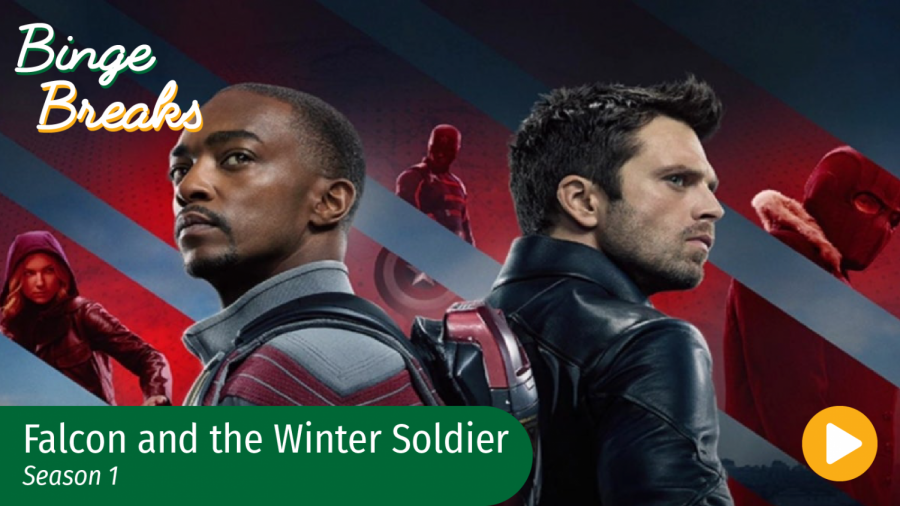Binge Breaks: “The Falcon and the Winter Soldier” is another successful Marvel and Disney+ collaboration
Photo credit/ Autumn Bohner
Throughout the first two episodes of the series, we learn that “The Falcon and the Winter Soldier” will address issues within the Marvel Cinematic Universe (MCU) and real life.
March 29, 2021
We are now two episodes into the brand-new Marvel series “The Falcon and the Winter Soldier,” and big things are already in the works for the future.
“The Falcon and the Winter Soldier” revolves around Sam Wilson’s Falcon and Bucky Barnes’ Winter Soldier. Both of these men were best friends with Steve Rogers’ Captain America. Now that Rogers has moved on after “Avengers: Endgame,” the series begins with Wilson giving up the shield he received at the end of that movie.
Wilson originally alludes that he gave the shield up because he believed it only really belonged to Rogers. Later in the first episode, we learn that the government named John Walker as the new Captain America. When Wilson sees this announcement on the news, he is immediately disappointed and sad.
While all of this is happening, we learn that Barnes is attending therapy to confront the trauma he experienced as the Winter Soldier. He is also trying to resolve past issues with former members of Hydra by setting them up to get arrested. I loved the therapy scene in the first episode. The camera work was astounding as the camera zoomed into extreme close-ups whenever Barnes felt uncomfortable. This camera work almost made the whole scene seem claustrophobic at times, which must have been how Barnes felt.
The first time both of the main characters meet is in episode two when Barnes approaches and berates Wilson for giving up the shield. The one-on-one interactions between the two main characters are always impactful whenever they happen.
After their argument, they go on a mission to find out more information about an enemy group called the Flag Smashers. During a fight with the Flag Smashes, Walker and Lemar Hoskins’ Battlestar meet Barnes and Wilson for the first time. There is a lot of tension between the two sets of people because Barnes and Wilson cannot see the shield and uniform on anyone besides Rogers.
After this first big action sequence, the rest of the episode focuses more on story building. We learn that one main issue in this series is racism, and Wilson is aware of it. Wilson gave up the shield because he believed America was not ready for a Black Captain America. We also get to Isiah Bradley, a Black super-soldier that was kept a secret from Wilson. This character is another example of how the series confronts racism. I think this series will continue to address racial issues later on.
Potentially having a Black Captain America can mean a lot to Black kids around the world. It meant so much for Black kids to see a Black superhero portrayed on the big screen in Black Panther, and I think Wilson could have a similar effect.
After we learn about Bradley, we see the best scene in the series so far. Barnes’ therapist requests that they sit down for a session with her, and after some snarky comments from both sides, it breaks down into real emotions. Barnes finally asks Wilson why he gave the shield away when Rogers believed in him and wanted him to have it. Wilson explains that Rogers and Barnes will never understand the reasons why he gave up the shield. This comment is again referring to the racist issues that they would not understand. This scene is full of emotion and great dialogue between Wilson and Barnes.
The last big reveal comes at the end of episode two when Wilson and Barnes try to talk with Helmut Zemo about Hydra and other potential super soldiers. Zemo was the main villain in “Captain America: Civil War,” and is in a European prison for his crimes in that movie. I think this meeting may be one of the best scenes in the entirety of the series due to past issues between Zemo and Barnes.
At the end of the day, I think this series will be another major success for the Marvel Cinematic Universe (MCU).
Contact the writer: [email protected]





